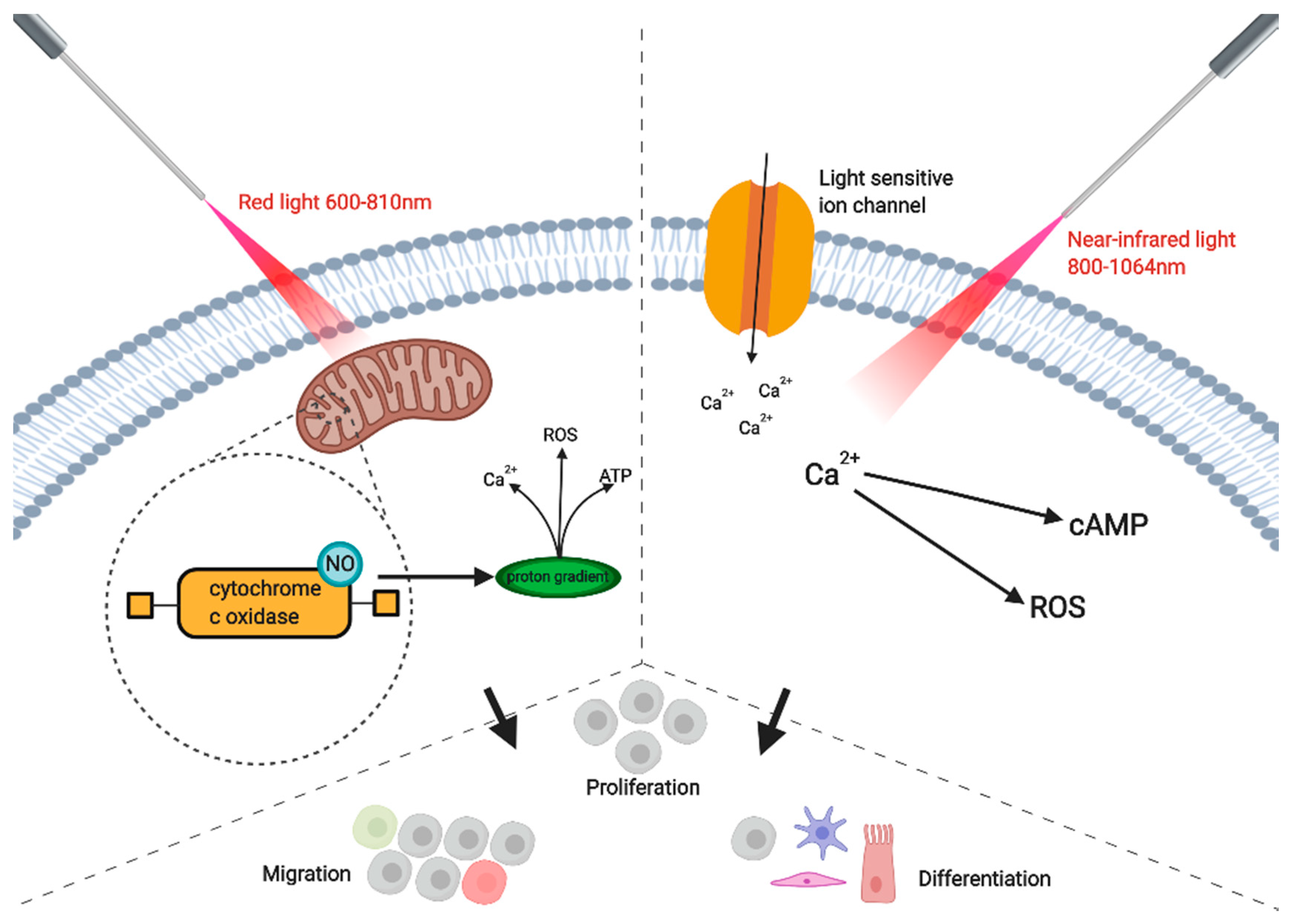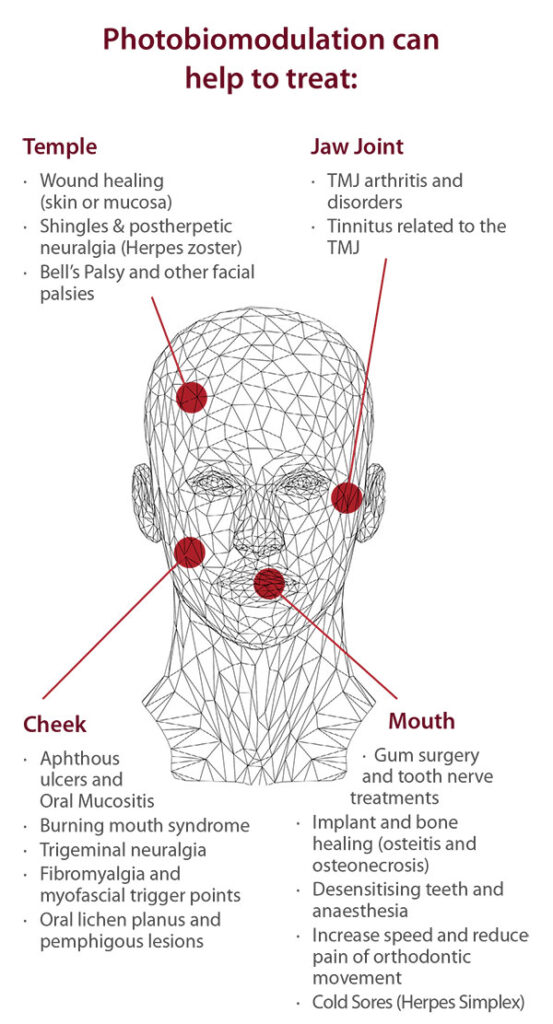Photobiomodulation - Questions
Wiki Article
The smart Trick of Photobiomodulation That Nobody is Discussing
Table of ContentsThe 5-Minute Rule for PhotobiomodulationLittle Known Facts About Photobiomodulation.3 Easy Facts About Photobiomodulation DescribedPhotobiomodulation Can Be Fun For Everyone
Laser therapy is a medical treatment that utilizes concentrated light to boost a process called. Throughout PBM, photons enter the tissue and engage with the cytochrome c facility within mitochondria. This interaction triggers an organic cascade of occasions that causes a rise in mobile metabolic rate, which can along with speed up the healing procedure.There is consensus that the application of a restorative dosage of light to impaired or inefficient tissue results in a cellular reaction moderated by mitochondrial systems. Photobiomodulation. Researches have shown that these adjustments can impact discomfort and inflammation, in addition to, cells repair service
Modifications in ATP, reactive oxygen species and nitric oxide comply with light absorption by Cc, O. These results are redox state and dose reliant.

10 Easy Facts About Photobiomodulation Described
PBM devices have actually been gotten rid of for advertising and marketing by FDA with the Premarket Notification/510( k) procedure as adjunctive devices for the momentary alleviation of pain. These clearances were based upon the discussion of scientific data to sustain such claims (Photobiomodulation). In this therapy, a light resource is positioned near or touching the skin, enabling the light power (photons) to pass through tissue where it connects with chromophores found in cells resulting in photophysical and photochemical adjustments that bring about alterations at the molecular, cellular and cells degrees of the bodyRemarkably, recent research study indicates that light can improve performance in typical cells and cells. The possible applications of PBMT are various and are being explored experimentally at the standard science, pre-clinical and medical degree. The current medical uses are for the alleviation of pain and swelling and the treatment of sporting activities injuries.

The therapy parameters and number of sessions required for PBMT are dependent upon location and reason. PBMT usually needs more than one therapy for optimum pain relief.
Not known Factual Statements About Photobiomodulation
Treatment specifications for PBMT were initially established making use of cells in vitro and in little pet versions. These treatment criteria generally had a low irradiance and fluence and worked well for cutaneous applications. When medical professionals started to use PBMT to treat structures that were located deeper in the body, they made use of these parameters with negative results.
We now comprehend that these adverse research studies resulted from wrong tool and therapy parameters for transcutaneous treatment of deeper frameworks. Current breakthroughs in laser treatment tools and even more research study right into the suitable dosages have considerably boosted the outcomes of PBMT. For treating deep tissues, the wavelength of light used identifies the deepness of penetration into a cells.
It is important that a medical professional makes use of the suitable wavelength of light and specifications to deal with a condition. One wavelength and one set of therapy specifications will certainly not work for all problems. Adverse negative effects have not been reported from making use of PBMT (Photobiomodulation). Upgraded June 27, 2016Juanita j
Light therapy is a non-invasive therapy that works by increasing the ability of the cell to produce energy (ATP) to recover the area being treated. Therefore, it can lower inflammation, swelling, and discomfort in the location. Research in this location is broadening, with more comprehensive study documents linked listed below for those that wish to discover more.
Getting My Photobiomodulation To Work
In the initial experiment, Dr. Endre Mester, used shaved rats and observing how the laser affected their ability to grow hair compared to the team that was not receiving LLLT. He discovered that the team of mice getting LLLT were able to expand their hair back quicker than the group of mice that really did not obtain LLLT visit this page (Hoon C, et al; 2012).This treatment is described by doing this to distinguish the difference between the lasers some professions make use of to cut (eg. in surgical treatments, or dental treatments). Low-level light therapy is pain-free, non-invasive therapy. It is used to reduce inflammation, swelling, and chronic joint problems, lower pain and accelerate injury recovery of nerves and tissues (Hoon C, et alia; 2012).
LLLT has a biphasic feedback, meaning that lower doses are usually attended be extra beneficial than greater dosages. That being stated, doses higher or less than the optimal dose doesn't affect (Hoon C, et alia; 2012). Consequently, it can be difficult to have studies on LLLT with many parameters.
Some firms incorporated the two (LED and laser) to provide a click this link much more all-around treatment since lasers can pass through much deeper than LED and infrared light (Norman Doidge, The Mind's Means of Recovery, 2015). During therapy, the location that is being dealt with is revealed to LED light from a Biography, Flex Laser, which is at 660 nm wavelength, followed by infrared light at 830-840 nm wavelength.
Report this wiki page